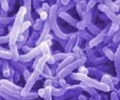In a finding that could put an end to the problem of mussels sticking to ships’ hulls and piers, researchers revealed that they now have a better understanding on what makes the mussels stick to solid surfaces underwater, adding that their findings could be used to develop new classes of adhesives that will work underwater and even inside the body, a new study published in the ACS journal Langmuir reveals.
Shabeer Ahmad Mian and colleagues note that mussels have a remarkable knack for clinging onto solid surfaces underwater. That can make them a real nuisance to recreational boaters and professional fishermen, who have to scrape the hitchhikers off their vessels to help them run more efficiently. Some types of mussels can even plug up drinking water pipes. Mussels also can stick to materials with nonstick coatings. Although researchers have already developed mussel-inspired glues, they still don't have a full understanding of exactly how these critters stick so well to underwater surfaces. So, Mian's team set out to investigate this mystery in painstaking detail to improve these adhesives and to develop new ones.
Using complex calculations and simulations, they determined that one part of the mussel "glue" molecule, called catechol, pushes water molecules out of the way to bind directly to wide variety of surfaces. They say that this study provides a clear picture of the first step of mussel adhesion, which could pave the way for better adhesives for many applications, such as for use in surgeries. The adhesives can be nontoxic and biocompatible, says Mian.
Source-Eurekalert









